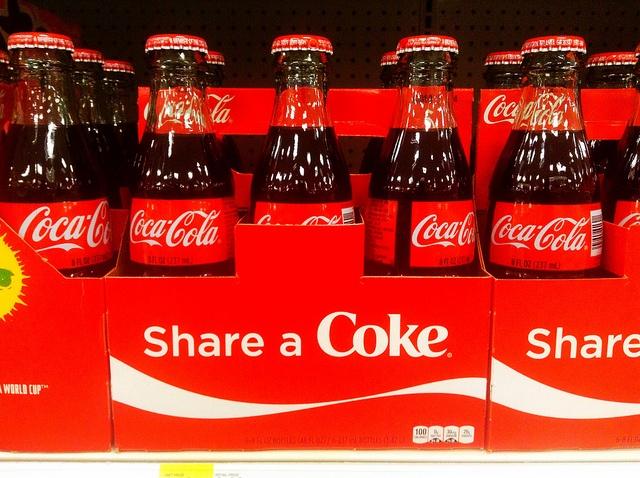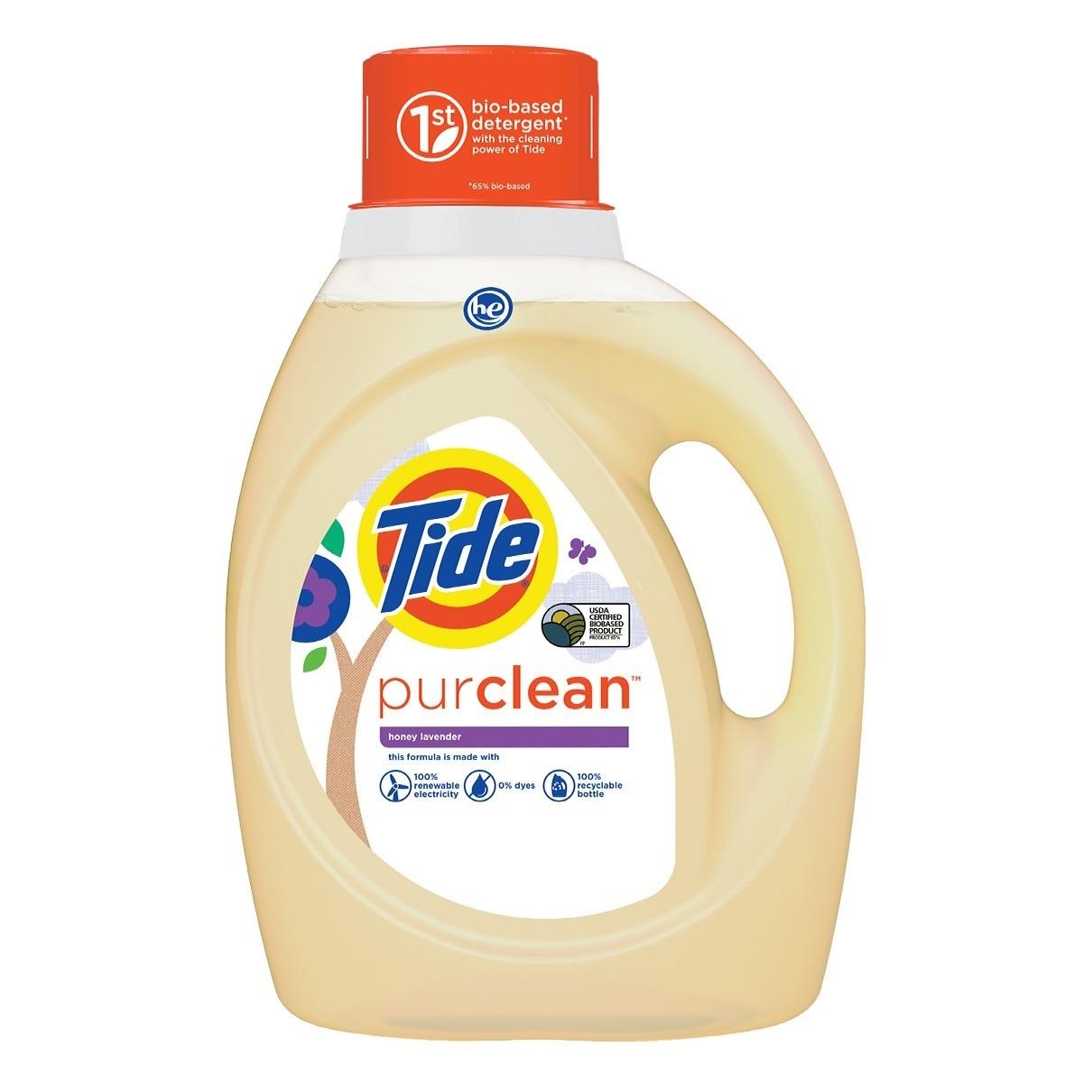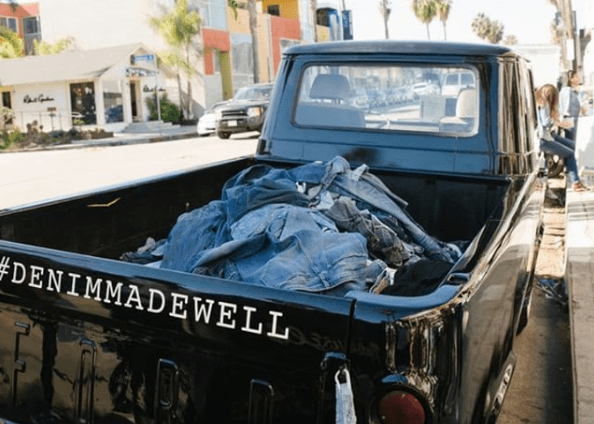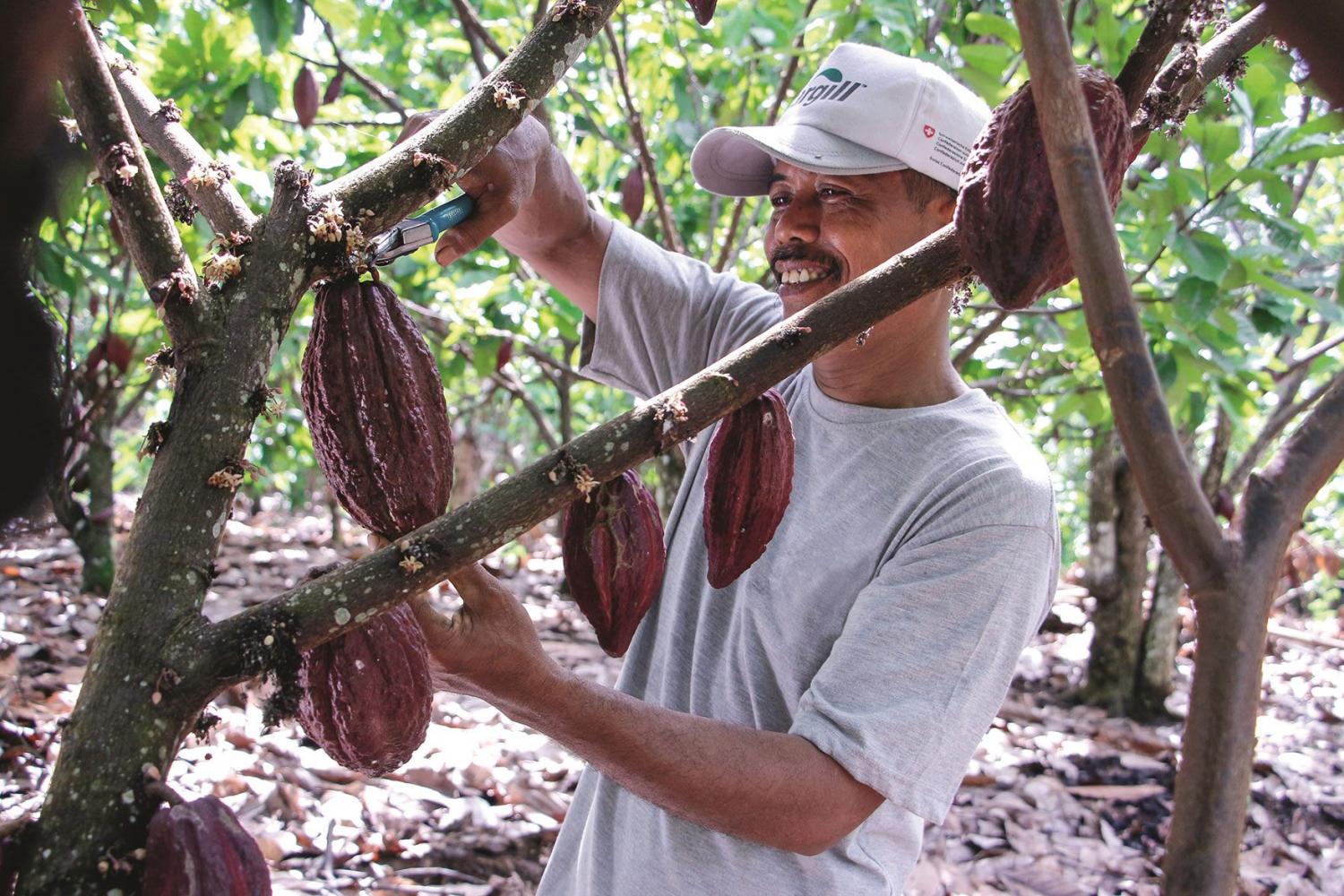Can A Company Be Green If It Is Damaging Human Health?


Newsweek ranked Coca-Cola as the ninth greenest company in the world. Coke earned this recognition by doing things like pioneering bioplastic bottles. But one has to wonder how Newsweek’s recognition reconciles with the company's signature soda being “…considered a major contributor to health conditions such as obesity, type 2 diabetes and tooth decay.”
This begs the question: Should we applaud companies like Coca-Cola that take leadership in reducing their environmental impacts? Or should we recognize that 'less bad' is no longer good enough?
We have passed sustainability’s Band-Aid stage
I founded Earth 2017 to recognize business initiatives that deliver profits and a difference. Much has been accomplished since this website’s founding in 2007. Companies from Apple to Walmart are now using solar power to reduce costs and emissions. They have formed consortiums to share sustainable best practices. American corporations are leading the world in adopting a green supply chain.
But the volume of sustainability successes, while considerable, still pales in comparison to the size of the challenge.
For the first time in recorded history, the earth has reached levels of 400 parts per million (ppm) of carbon dioxide in the atmosphere. Our hotter planet is creating food and water scarcity on a scale that the U.S. Department of Defense projects will increase the threat of war around the world.
Approximately half of our food is sourced from the largest food companies. This Big Food diet has damaged our health. Thirty-seven percent of Americans are either diabetic or in a pre-diabetic condition. The health care costs tied to eating Big Food threatens our national solvency including the ability to fund Medicare.
We confront a future where incremental change cannot deliver meaningful solutions. We have passed the “Band Aid stage” of sustainability’s maturation. The path to sustainability now requires disruptive change.
Legacy resistance is blocking disruptive sustainable solutions
That our economy is still grounded on 20th-century technologies and business models is the core challenge confronting mass adoption of sustainable solutions. Specific examples include:
- Reliance on a fossil-fueled electricity grid even though there is a technology path for achieving lower electricity bills plus reduced emissions through renewable energy, energy efficiency, smart buildings and distributed grid design.
- Reliance on fossil-fueled cars even when the cost to fuel electric cars is equivalent to a 75 cents per gallon gasoline price. A major reason why we will buy a record 17 million gasoline-fueled cars this year is our failure to design and implement a national recharging system that would remove electric car range anxiety as a consumer adoption barrier.
- A food system that is heavily shaped by Big Food lobbying that characterizes pizza served to school children as as a vegetable. Big Food’s overuse of sugar, salt and fat to grow sales has made their food and beverage products the “new tobacco.”
Resistance to change is a real economic and political force. Change can be discomforting. It is often painful for individuals and individual companies. However, resistance to change is futile if it creates unsustainable pain levels. The economy, environment and our health are now at this pain threshold. Paraphrasing Games of Thrones, “Disruption must come.”
How disruption will be the final step of the green economic revolution
Because we are a democracy and consumer-based economy, it will be the consumer/voter that will drive change. And the consumer/voter is in pain. Their health is being challenged by a diabetes epidemic and related diet-based illnesses. They are struggling through 15-plus years of stagnant real income growth. They are increasingly being impacted by externality costs like severe weather and wars fought over oil, made worse by a warming planet. This level of consumer/voter pain will drive disruptive change across our political and economic system.
We are approaching the tipping point where the consumer/voter will not accept as authentic a company like Coca-Cola being recognized as a top-10 green company when its principal products are linked to a national (and global) health crisis. Driven by pain, consumers/voters will increasingly demand of businesses and government:
- sustainable goods and services that cost less while also delivering real human health improvements
- sustained economic growth won through real productivity gains rather than government deficits, unsustainable commodity booms or Wall Street financial engineering
- peace achieved by finally winning independence from fossil fuels and the wars fought to preserve their supply.
Based on my economic analysis, the future can now be told. We are past the point where businesses (and public policy) can have a foot in both the 20th and 21st centuries. The multi-trillion-dollar green economic revolution is moving out of its startup phrase. The focus on best practices that deliver incremental results will be replaced by a consumer/voter demand for disruptive change. The green economic revolution will then define the course of our 21st century.
Image credit: Flickr/Mike Mozart
Why Bio-Based is the Next Step in the Sustainability Journey for Tide


Editor’s note: This post is a follow-up to our recent Twitter chat with Tide and the U.S. Department of Agriculture. In case you missed it, you can catch a recap here.
By Todd Cline, Tide
Procter & Gamble has been making Tide laundry detergent for 70 years, and a lot has changed since Tide was introduced in 1946. As a member of the research and development team, we’re focused on constantly innovating to meet changing consumer and social needs.
Safety and performance have been core values at the heart of P&G since its founding more than 175 years ago. Over the past decade, we’ve increased our focus on creating a more resource-efficient laundry process.
We have long been champions for detergent compaction -- first with powders and then with liquids -- to increase formula concentration and reduce packaging and dosing, starting in 1988. With Tide Pods, we provided our most concentrated form ever and introduced bag packages which require less plastic and are a lower weight for shipping.
We brought significant cleaning innovation to cold water washing behind Tide ColdWater Clean in 2005, making it possible to get the same clean in cold as previously achieved in warm or hot water. Through education campaigns, we informed and enrolled people to “turn to cold” and save the energy otherwise wasted warming wash water (switching to cold from hot or warm wash can save up to 359 pounds of CO2 per household per year). In fact, since 2010, washing in cold water has increased from 38 percent to 56 percent globally.
We have invested in streamlining our manufacturing process to gain efficiencies and reduce waste, and we are pleased to now produce our newest formula in a zero manufacturing waste to landfill facility.
Now our latest innovation: Tide purclean, the first 65 percent bio-based detergent with the cleaning power of Tide, is available at select retailers.
As a member of the research and development team at Tide who worked closely on the Tide purclean formula, it was exciting to finally be able to share the details of our work during a Twitter chat with TriplePundit in April. A focus on bio-based materials supports our company goals to reduce resource demand and deliver on performance, while offering consumers a simple step to help the environment.
Tide purclean is made with 65 percent bio-based materials and produced at a facility that sends zero manufacturing waste to landfill and powered with 100 percent wind power. By using a blend of bio-based and traditional ingredients, the new formula will increase the use of renewable materials, while cleaning as well as Tide Original liquid at stain removal, whiteness, color care and the ability to clean in energy-saving cold water. Tide purclean is also free of dyes, chlorine, phosphates, ethanolamine and optical brighteners.
We sought certification with the USDA BioPreferred program because its Certified Biobased label assures customers of the bio-based content in a product. Bio-based materials, derived from plants and other renewable agriculture, such as marine and forestry materials, replace petroleum-based, non-renewable content.
Our goal was to deliver a formula with more bio-based material, while maintaining the same performance as Tide Original. This is because our research shows the biggest barrier for most people to use a more sustainably-sourced detergent is the performance trade-off consumers have come to anticipate from natural detergents on the market today. The “Naturals” segment only represents 3 percent of the laundry category, despite 13 percent of consumers describing themselves as ‘niche green’ and 67 percent as ‘sustainable mainstream.' We believe the innovative performance breakthroughs in the new formula will offer consumers the opportunity to take a simple, daily step to help the environment and meet their laundry needs with no cleaning performance trade-offs. And we’d like to increase the use of bio-based materials in Tide and other products as scale and price permit, so we’re continuing to innovate.
Laundry is one of the most essential at-home tasks and presents a daily opportunity for consumers to choose a formula with an improved environmental profile. We hope that by using the reach of the Tide brand we’ll be able to educate more consumers about the benefits of bio-based materials and the USDA certified bio-based label. Ultimately, when more people see there are not performance tradeoffs with Tide purclean, using a bio-based option can become a more popular choice.
Image courtesy of Tide
Todd Cline is Research and Development Section Head for Tide.
Big Tobacco is Losing Ground in Europe


Axa, a French insurance company with total assets exceeding $616 billion, announced it will stop investing in the tobacco industry. The company also said it will sell its nearly $1.9 billion in tobacco investments.
Axa’s relationship with tobacco companies, an industry worth an estimated half a trillion dollars according to the Tobacco Atlas, is ending because the insurer said “it makes no sense” to invest in an industry that takes just short of 500,000 Americans’ lives annually — a figure that includes deaths related to secondhand smoke.
The insurance company is also responding to a High Court challenge in the U.K. where tobacco companies suffered a blow involving cigarette packaging. The case against four of the largest tobacco firms — Philip Morris, British American Tobacco, Imperial Tobacco and Japan Tobacco — went in favor of the British government, which is pursuing a generation where children would “grow up smoke-free,” the BBC reports.
Following the court decision, tobacco companies have one year to change all of their cigarette packaging to an unattractive olive green color. The packages must have large, unappealing images covering at least 65 percent of the box to serve as health warnings for potential consumers. Promotional labels downplaying the impacts of cigarette smoke will also be disallowed.
“The business case is positive,” said Axa’s soon-to-be CEO Thomas Buberl. “It makes no sense for us to continue our investments within the tobacco industry. The human cost of tobacco is tragic — its economic cost is huge.”
Buberl told the Guardian that, as a large provider of health insurance, investing in an industry that causes chronic disease and illness is rather counterproductive.
The court’s decision to up tobacco advertising standards is the latest in a U.K. government that has proven to prioritize smoking legislation. The Children and Families Act 2014 was implemented to prevent adults from smoking with children in the car. On a significantly more strict level, the Health Act 2006 banned smoking from areas found to be “substantially enclosed” and public places throughout the United Kingdom.
Image courtesy of ASH
Sustainability critical to future business: IEMA Report


By Vikas Vij — Leading companies increasingly recognize the importance of embedding sustainability into their business models. However, professionals seeking sustainability outcomes face certain barriers. Return-on-investment rules are a long-standing challenge, and overcoming them requires positive engagement with finance teams. Presenting a strong business case is another key challenge, requiring creative work across the organization and often with external stakeholders.
The Institute of Environmental Management & Assessment (IEMA) has launched a new report that highlights these challenges and states that businesses need to do more to address the collective force of global megatrends. The report, “Beyond the Perfect Storm: The Corporate Sustainability Challenge,” cautions against the “business as usual” approach and recommends moving toward a new age of innovation and resolution of sustainability challenges.
IEMA’s report, launched at industry event EdieLive, calls upon businesses to gear up to meet the growing challenges of climate change, population growth, loss of natural capital, water stress, resource scarcity, food supplyand global development issues.
According to the report, innovative business models and new ways to measure return on investment are needed to enable businesses to transform. It also suggests that strategic as well astactical skills of sustainability professionals are central to this change.
Nick Blyth, IEMA’s Policy Lead and the report’s author, says that unless a transformative shift from short-term thinking can be introduced,businesses – individually and collectively – will be unable to reap the rewards. But the urgency also brings with it an opportunity with very tangible financial and reputational benefits for organizations that rise up to the sustainability challenge.
The report offers inspiring examples of leading companies including Marks & Spencer, ArcelorMittal, Wiles Greenworld, and EY to demonstrate what is possible when long-term sustainability practices are adopted.
Palm oil sustainability is one of the issues where M&S showed early leadership. Members of the Consumer Goods Forum (CGF) are committed to ending deforestation in commodity supply chains, and M&S became co-chair of the palm oil working group, developing sourcing guidelines for 400 of the world’s largest retail and manufacturing organizations.
Already a ‘green’ business, office supply and solutions firm, Wiles Greenworld is actively addressing financial and social issues with a focus on opportunities for change. Its transition to zero-carbon operations has included installing more than 80KW of solar PV panels on the roof of the firm’s main office in London.
Arcelor Mittal is one of Liberia’s largest investors and a founding member of the Ebola Private Sector Mobilization Group, a business body collaborating to protect people, companies and communities from the disease. Given its footprint – direct and indirect employees, their families, their extended families, and their communities – ArcelorMittal touches the lives of tens of thousands of people.
EY works with organizations worldwide to better connect and create impact where it operates. The EY Vantage Program sends top-performing professionals abroad for six weeks to provide free support to high-impact entrepreneurs in emerging markets. Since its launch in 2005, the program has provided more than 60,000 hours of support to nearly 250 entrepreneurs in 30 countries
IEMA’s business briefing also shows that sustainability professionals are now receiving a more positive than negative response to their work. Over 60 percent of these professionals now view corporate sustainability as a “change process” where the organization seeks to understand material issues, impacts and dependencies in order improve and transform their organization.
Source: IEMA
Image Credit: Flickr
This article originally appeared on Justmeans.
3p Weekend: These 10 Retailers Will Reward You For Recycling


With a busy week behind you and the weekend within reach, there’s no shame in taking things a bit easy on Friday afternoon. With this in mind, every Friday TriplePundit will give you a fun, easy read on a topic you care about. So, take a break from those endless email threads and spend five minutes catching up on the latest trends in sustainability and business.
The average American produces more than 4 pounds of waste every day. And while we know recycling and reuse can cut this figure down to size, sometimes the whole thing can seem like a lot of trouble.
Sure, if you have access to curbside recycling, depositing those bottles, cans and cardboard boxes is easy as can be. But what about items that aren't recovered curbside? Recycling things like household items, clothing and electronics usually means loading up the car, driving to a drop-off location, and often suffering other indignities like annoying forms or waiting in long lines with the great unwashed.
The good news is: A growing number of retailers feel your pain. And they're responding by not only making the recycling and reuse process downright pleasant, but also by sweetening the deal with discounts, free gifts and other rewards. Read on for 10 retailers that reward you for recycling, and start cleaning out those closets this weekend.
H&M
Long reviled for its role in the fast-fashion industry and for producing what critics dubbed trash-ready garments, H&M has done a 180 as of late. The company is going all-in on sustainable cotton, is seeking to cut impact through its Conscious Collection and got real about its footprint in its latest sustainability report. Even our editor-in-chief, Jen Boynton, was pleasantly surprised with the company's turnaround after a recent visit to H&M HQ in Stockholm, Sweden.As part of its efforts to cut down on waste, H&M now operates one of the retail industry's leading recycling programs. Bring used clothing of any brand to an H&M store for recycling, and you'll receive a coupon for your next purchase for every bag. And those duds are actually put to good use: This year, H&M launched its first line of products made from the fibers of collected garments.
Best Buy
Best Buy caught some flak earlier this year when it rolled back some aspects of its industry-leading recycling program, namely adding a $25 fee for the recycling of old TVs and monitors. But the electronics retailer still offers plenty of ways to recycle your unwanted tech, and many include rewards.For starters, you can snag a $2 coupon for every empty ink cartridge you recycle at Best Buy, and when it's time to replace your printer, you'll receive 15 percent off a new model if you recycle your old one in the store. The retailer often offers rotating recycling rewards for certain items, so keep an eye out.
Eileen Fisher
Earth-minded fashion label Eileen Fisher is serious about waste reduction -- and that includes recovering your gently-used duds. Simply bring your unwanted Eileen Fisher attire to any retail location -- or mail it to one of two designated recycling centers -- and you'll receive a $5 reward card for each item. It's that simple. Rewards can be used online or in any Eileen Fisher store.But the reuse train doesn't stop there. Through its Green Eileen program, the company sells those gently-used garments to other shoppers looking to save some cash or reduce environmental impact. For the largest selection of Green Eileen offerings, head to the company's Seattle or Yonkers retail locations.
MAC
If you can't get enough beauty products, this is the recycling deal for you. But be warned: It calls for some mild hoarding (we won't tell anyone).MAC was one of the first cosmetics companies to offer a take-back program for its packaging through the Back to MAC program -- and years later, the program is still going strong. To sweeten the deal, you can snag the free MAC lipstick of your choice by recycling six packaging items (such as empty compacts or lotion bottles) at a MAC retail counter or via mail-back.
Apple
Personal anecdote: While reporting on COP21 in Paris in December, I made the most distressing discovery that can befall any tech junkie: the severed Macbook cord. After buying a replacement back in the states, I was equally unsettled that my local Apple store couldn't accept the damaged cord for recycling.It was reassuring to learn that the tech giant does indeed recycle larger items -- and you may even get rewarded for it. Turn in any large device (ranging from an iPhone or other branded smartphone to an iPad, Macbook or even a PC), and if the item is determined to have value, you'll receive an Apple gift card in exchange. Older items like iPods aren't eligible for rewards, but you can still recycle them responsibly via Apple's mail-back program.
Kiehl's
Much like MAC, cosmetics and skincare giant Kiehl's now also rewards customers for recycling product packaging. No hoarding here: Just bring in an empty full-sized Kiehl's product to a retail counter, and you'll receive a stamp card to keep track of your waste-cutting efforts. For every 10 stamps you earn, you can select a complimentary Kiehl’s Travel Collection product.Madewell
Denim label Madewell offers some pretty impressive perks for recycling -- and the company makes sure your trashed duds are put to good use. Through its Denim Donation program, Madewell accepts unwanted jeans and donates them to make housing insulation for Habitat for Humanity builds. Not enough feel-good vibes yet? You'll also receive $20 off a new pair of jeans for every pair you donate (limit one deal per customer, per day).The North Face
Outdoor gear giant The North Face is transforming recycled clothes into nature conservation. Through its Clothes the Loop program, The North Face accepts and recycles used clothing and shoes -- of any brand and in any condition -- with all proceeds benefiting the Conservation Alliance, which funds community-based campaigns to protect wilderness and recreation areas. You'll also receive a coupon for your next purchase every time you donate.Levi's
Like a few other retailers on this list, Levi Strauss & Co. and its retail chain Levi's accept clothing and shoes of all brands for recycling. Through its recycling partner I:CO, clothing is sorted for resale, reuse and recycling -- ensuring nothing goes to waste. And you'll receive a voucher for 20 percent off your next in-store Levi's purchase for each donation.Lush
Lush prides itself on selling cruelty-free, vegetarian and ethically-sourced cosmetics and skincare products. And its commitment to lighter impact extends to recycling. Through the Five-Pot Program, you can bring back any empty black Lush 'pots' for recycling, and you'll receive a Fresh Face Mask for free. Less waste and a healthy glow? Sign us up!Did we forget your favorite retail recycling program? Tell us about it in the comments section!
Image credit: Madewell via Instagram
Big Power Users Can Shop for Renewables Starting Here


Developed by the World Resources Institute, the interactive Corporate Renewable Energy Strategy Map shows where heavy energy users can buy renewable electricity. The state-by-state map displays options at the scale companies need from local utilities and at prices Institute considers "affordable."
For companies considering where to put new facilities or expand existing ones, the map -- above -- actually lets companies compare renewable power options in various states . But my favorite feature is how the developers at the World Resources Institute (WRI) aspire to track and update the map with deals utilities are cutting with customers. That way, maybe other corporations can cut similar, or even better, deals.
Included in the state data are renewable energy mandates and tax incentives (where states have them), "green tariff" programs, and other utility or state offerings that let customers get more control over their energy costs. One upshot: The map demonstrates that states with no renewable power supplies-- the largest concentration of which are in the Southeast U.S. -- are at a distinct disadvantage in drawing billions of dollars in investments by corporation operations whose missions are increasingly linked to sourcing cleaner energy.
Letha Tawney, director of utility innovation and Polsky chair for renewable energy at WRI, says the organization will update the map as new utility products emerge. So, check back over time and watch how cleaner power becomes increasingly available on a large scale. Hopefully, utilities and states will monitor what others are doing to keep up or raise the bar with cleaner sources of electricity.
The otions presented to buyers, with each state having something different to offer, are tied to what WRI and its three partners forged as "Buyers Principles" organized for the Renewable Energy Buyers Alliance (REBA). Among the current 58 signatories are Amazon, Google, HP, Lockheed Martin, Microsoft, P&G and Volvo, to name just a few. Also involved are Rocky Mountain Institute's Business Renewables Center and BSR's Future of Internet Power project.
"If companies want to replace some or all of their traditionally-fueled electricity they buy from their utility with renewable energy such as wind and solar power -- and they want the renewable energy certificates (RECs) that match that electricity -- they have a few choices," Tawney told 3p.
And therein lies the challenge: only a "few choices." With this map and its expanding functionality, hopefully options will grow.
A shout-out from the White House
The White House on Thursday gave a shout-out to REBA and WRI, commending them for joining the Clean Energy Ministerial initiative to scale corporate procurement and drive additional deployment of renewables across the range of member countries in its push to secure agreements to the Paris Climate Accord.
If the corporate facility is in a state where users can select their supplier, companies can find one that offers renewable energy directly. "This is exactly what Facebook did in the summer of 2015," for a new data center in Fort Worth, Texas, Tawney said.
As more corporate energy buyers realize how renewable electricity costs are declining and match that with the absence of any price risks inherent with fossil fuels or nuclear, budgeting energy costs can become a lot more predictable.
"Offering a compelling renewable energy options is crucial to attracting the largest iconic brands to a community," Tawney said.
Companies move toward renewables at key buyers summit
In an interview, Tawney and her colleague Marty Spitzer, director of U.S. climate and renewable energy policy at the World Wildlife Fund (WWF), said close to 95 companies demonstrated genuine interest in renewables at a REBA summit May 18-20 at Microsoft's headquarters in Redmond, Washington.
Ten utilities sent representatives to the Summit, Tawney said, which included an opt-in, four-hour, brainstorm exercise patterned after the TV show "Shark Tank." They included Avista Corp., Berkshire Hathaway Energy, Dominion Virginia Power, DTE Energy, Duke Energy, Pacific Corp., Puget Sound Energy, Rocky Mountain Power, Xcel Minnesota and Xcel Colorado.
Stan Blackwell, director of customer solutions for Dominion Virginia Power, is the type of utility manager who participated and has been "engaging actively with several customers," Tawney said. Blackwell couldn't be reached for comment.
In another instance, Spitzer said Proctor & Gamble asked for help on buying renewables from Georgia Power for its paper manufacturing plant in Albany, Georgia. "But it didn't get very far," he said. So Georgia Power lost out, perhaps in this instance to Constellation, a unit of Exelon, which agreed to develop up to a 50-megawatt biomass plant there.
The six Buyers Principles
What follow are the Buyer Principles that WRI and WWF presented to the Summit attendees. They cover what the signatories collectively are seeking from the marketplace.
- Greater choice in our options to procure renewable energy
- Cost competitiveness between traditional and renewable energy rates
- Access to longer-term, fixed-price renewable energy
- Access to projects that are new or help drive new projects in order to reduce energy emissions beyond business as usual
- Increased access to third-party financing vehicles as well as standardized and simplified processes, contracts and financing for renewable energy projects
- Opportunities to work with utilities and regulators to expand our choices for buying renewable energy
The Shrinking Price-Gap Between Organics and Conventional Food


Sales of organic food have increased rapidly over the past decade, fueling the continued success of supermarket chains such as Sprouts and Whole Foods. Whether organics are really better than conventional foods is a nuanced argument, but customers bought more fresh and processed organic foods in the past decade, even during the Great Recession. According to one leading organic food trade association, sales of organics in the U.S. soared to $43.3 billion last year, an 11 percent increase from 2014. More farmers are growing organics, more families are buying them, and even the small export market for U.S. organics is growing.
Overall, organics are still far more expensive than conventionally-produced foods, but the gap is narrowing. According to data the U.S. Department of Agriculture (USDA) released last week, the price difference for fresh produce is decreasing as more farmers transition from conventional to organic. For animal products, the price differential has declined somewhat, but organic milk and eggs are still far more expensive than those produced conventionally.
Overall, however, data suggests a lower price differential will allow organics to scale, while those farmers who transition to organic agriculture will in turn benefit from higher profits due to organics' price premium.
According to the USDA, which culled much of its information from the market research company Hartman Group, organic spinach has narrowed that stubborn price gap more than another food. Organic spinach offers the lowest price difference, with only a 7 percent gap between organic and conventionally grown. Staple crops such as carrots, potatoes and apples present less than a 30 percent difference. Consumers who choose packaged salad mixes are paying a huge premium, with the difference in price now at 60 percent.
Products with the narrowest price gaps are growing in market share. Spinach, apples and granola are examples of products in which organics are taking a larger market share as their price edges ever closer to competing foods that are conventionally grown.
Organic eggs and milk pose the biggest price gaps, at 72 and 80 percent, respectively. Some of that difference is due to an increase in demand. But USDA rules, which require that feed and pasture for chickens and cows is all organic, are a huge factor in these products’ costs. Many of these products have a complicated supply chain, largely due to a longstanding shortage of organic feed here in the U.S. For example, since chickens at hatcheries producing organic eggs must eat organic feed, many producers are importing organic feed from overseas, adding to their costs and then, to their customers’ grocery bills.
Consumers want organics, and retailers are happy to sell them. So, what’s getting in the way? The biggest obstacle for farmers is that three-year transition period it takes a farm growing conventional crops to certify their land for organic agriculture. But more companies are striving to help farmers with that period of limbo, which could help those farmers growing organics meet demand.
The evidence suggests that such a shift is here. In the San Joaquin Valley, long a bastion of agribusiness, interest in organic farming is surging. The production of organic foods such as tomatoes, asparagus and broccoli are booming in Central California, largely because of the long-term potential to score higher profits. If the free market dictates what products succeed, then organics are in for long and sustained growth.
Image credits: Leon Kaye
JPMorgan Chase’s $100M Investment in Detroit is Paying Off


In 1950, Detroit was the richest city in America and was home to almost 2 million people. A lifetime later, the city’s population has cratered to under 700,000 and it's considered to be the poorest large city in the U.S.
The Motor City has struggled with bankruptcy, woeful “emergency manager” laws, and countless other social and political problems. While some sections of the city, such as Corktown, the Woodward Avenue corridor and downtown, are on the mend and have thrived, much of the city struggles with limited services, abandoned homes and poverty.
Back in 2014, JPMorgan Chase made headlines with what the company said was a $100 million investment in Detroit. The reaction was mostly skepticism. Today, the evidence suggests the banking giant’s bet on Detroit was a positive one.
According to JPMorgan Chase, half of that money was distributed to two community lending banks tasked with writing loans for community development projects in neighborhoods outside of downtown. A quarter of that money was to be used to eliminate the blight that became the symbol of Detroit. The rest was split between infrastructure projects, small business programs and job-training initiatives.
Urbanization is transforming almost all large cities across the U.S. as more citizens crave a city environment that permits them to live near work, entertainment and travel hubs. Amongst America’s old industrial cities, however, Detroit is an outlier, which presented challenges for JPMorgan Chase. The Motor City is one of homes, not apartments; after all, Detroit was the epitome of the American dream, in which families lived in single-family homes and drove to both work and play.
To that end, JPMorgan partnered with organizations such as Invest Detroit to transform historic buildings in Detroit’s core into apartments. Such efforts complement the work of other investors including Dan Gilbert, who relocated employees working within his companies including Quicken Loans, from suburban Detroit to downtown.
Those successes aside, a city still needs small businesses if its economy, and its residents, can be sustained for the long term. JPMorgan insists it is focused on fostering entrepreneurship and social enterprise as well, so it launched two programs, Mission Main Street Grants and Small Business Forward. These initiatives have helped business clusters across the city, such as TechTown Detroit and Eastern Market, attract new businesses. JP Morgan says these programs allow businesses to secure loans seamlessly, compared to the onerous process most entrepreneurs endure when securing funds to turn their business plans into enterprises. Meanwhile, JPMorgan-sponsored events, such as Detroit Startup Week, offered locals the opportunity to share their ideas with bankers and other business leaders.
It will be a while before Detroit can truly describe itself as one of the country’s leading “smart cities,” but Detroit’s recovery, albeit fitful, is on the way. Local business leaders praised JPMorgan’s numerous efforts, such as the Entrepreneurs of Color Fund, a partnership the bank entered with the W.K. Kellogg Foundation. The Fund loans amounts as small as $15,000, allowing business owners in the city to access capital.
More investment is needed. The city’s 32,000 minority-owned businesses have perched Detroit as the fourth largest city in the U.S. when it comes to the number of businesses run by racial and ethnic minorities. But many of these small firms, from building contractors to app developers to cafes, rely on loans from families instead of banks. If JPMorgan’s competitors in Michigan could try to match its commitment to Detroit, the once-capital of industrial America could rebound even faster.
Image credit: Detroit
Trump Fumes as PGA Moves Golf Tournament to Mexico


For now, he may be tying or even slightly ahead of Hillary Clinton in the general-election polls, but Donald Trump's brand reputation is on a roller coaster that keeps sliding down. In a most ironic twist, the latest organization to ditch Trump involves a golf tournament that will move from one of his resorts to . . . Mexico.
The PGA Tour announced earlier this week that it would relocate the World Golf Championships Tournament, which has been held in Miami since 1962, to the Club de Golf Chapultepec in Mexico City. PGA claimed the primary reason for the move was Cadillac’s decision not to renew its sponsorship. Grupo Salinas, a Mexican conglomerate with interests in the banking, media, retail and telecommunications sectors, has agreed to sponsor the tournament through 2023.
Although PGA Tour claims the decision came down mostly to finances and the opportunity to expose golf to a new international market, Commissioner Tim Finchem acknowledged politics was partly behind the move. “When when you are asking [a sponsor] to invest millions of dollars in branding a tournament and they’re going to share that brand with a host, it’s a difficult conversation,” Finchem said at press conference on Wednesday. “The politics may have contributed some since he’s been running.”
Naturally, Trump responded with his usual invective toward Mexico and the role the country played in what he says is the undermining of the U.S. economy. “By the way, I hope they have kidnapping insurance,” blustered Trump during an interview on Fox News with Sean Hannity.
While Trump thumped 16 competitors to emerge as the Republican presidential nominee, his overall brand, and therefore his companies, have suffered. The bloodletting began last year after his speech announcing his quest for the Republican nomination, which launched his idea of walling off Mexico to keep out rapists and some “good people.” That outburst led a bevy of companies, including Macy’s, to ditch his clothing line. NBC Universal also cut its ties with Trump, replacing him with Arnold Schwarzenegger on its series "The Apprentice."
And while Trump continues to rail against “crooked Hillary” because of her ongoing email server snafu, lawsuits claiming Trump University defrauded students are underway in San Diego. Trump has been dismissive of the litigation because, after all, the Indiana-born U.S. judge who presided over the class-action lawsuits is a “Mexican.”
Even Trump’s posh resorts are taking a hit. Hipmunk, a San Francisco-based online travel company, suggested last week that fewer guests are checking into any Trump-branded property, from New York to Las Vegas to Atlantic City. While that is only one company out of many that books hotels, the dramatic decrease in bookings show that the Trump brand is toxic to many Americans.
Is Trump’s portfolio of companies in for a slow decline as the result of his political shenanigans? A debate over evidence tying a business leader’s behavior to his or her company’s overall performance has long been underway. One MIT study suggests there is a connection; others suggested that having a narcissistic leader with an outsized personality probably does not make a difference one way or another. Other assets, such as strategic thinking and communicating strong values throughout an organization, are how CEOs can drive long-term success at a company, some analysts say.
But there is a history of obnoxious CEO behavior that drove customers away. For example, outrage over the elephant killed by GoDaddy.com’s CEO repelled customers from the Internet registration and Web hosting company. GoDaddy CEO Blake Irving’s reputation for behaving like an overgrown frat boy, and his company’s sexist advertising, also hurt performance. Irving has arguably turned that reputation around as of late, between nixing those adds and aggressively hiring women into leading tech positions at the company. Since GoDaddy went public last year, its stock has bounced up and down like a ping pong ball, but in recent months it has improved.
If Trump’s companies can rebound, whether or not he wins the presidency, is an open question. But what is more worrisome is America's relationship with a country that shares a long border, history, culture and, yes, business. Immigration from Mexico is down, deportations are up and President Barack Obama is derided by many as the “Deporter-in-Chief.” Facts have proven not to matter this presidential election, but here’s one fact: America’s complicated relationship with trade and its trading partners are bound for an even more volatile ride as Trump continues to shout down, instead of building up, this country’s political and economic relationships with the rest of the world.
Image credit: PGA Tour
The Cocoa Industry's Road to Sustainability


By Taco Terheijden
Although the growth in demand for cocoa beans has slowed to around 0.5 percent to 1 percent a year from 2-3 percent in 2014, it’s a fact that the number of affluent middle-class consumers who enjoy cocoa and chocolate products and can afford to buy it, is increasing. There is also greater demand for ethically-sourced cocoa and chocolate products. Despite this, the cocoa-growing sector has still struggled to increase supply to meet demand.
This is due to several factors. Approximately 95 percent of the world’s cocoa comes from smallholder cocoa farmers cultivating less than three hectares of land. Smallholder farmers can struggle to access and adopt the skills and practices that are essential to running a profitable, sustainable farm. At the same time, there’s skepticism among the next generation about the ability of cocoa farming, and farming in general, to deliver viable ways to achieve a living wage that supports their families.
At Cargill Cocoa & Chocolate, our sustainability strategy is integral to our business model; it is designed to improve the lives of cocoa farmers and their communities and, in doing so, secure a long-term and sustainable supply of cocoa. All of our programs in cocoa origin countries are delivered through the Cargill Cocoa Promise, which was established in 2012.
The Cargill Cocoa Promise covers three key intervention areas – farmer training, farm development and community support. Through it, we not only aim to address these social and community challenges for cocoa farmers and their communities and deliver a sustainable supply of cocoa, but also to accelerate progress toward a transparent global supply chain.
Our Theory of Change, Results Framework and Monitoring and Evaluation System all work together to help us capture the results of our efforts, and ensure we continue to learn and evolve our Cargill Cocoa Promise. This approach is vital to ensure that we deliver tangible improvements to farmer and community livelihoods, and to the success of our business.
We see growing evidence that empowered farmer organizations are key to a thriving, sustainable cocoa industry. They are professional, local groups that can help their members to farm more profitably, productively and sustainably. We find that when smallholders participate in well-run farmer organizations, they have a chance to share knowledge, access finance and develop long-term commercial relationships. This allows them to grow their scale and join ‘a winning team.'
Cargill believes professional farmers’ organizations are fundamental to improving farmer and community livelihoods. We now support 181 farmer organizations in West Africa through the Cargill Cocoa Promise. Developing and professionalizing them is a key priority and, in line with this, we have developed the Cargill Coop Academy.
Launched in 2013 in Côte d’Ivoire, the Coop Academy teaches business skills to farmer organization executives. Participants undergo 28 days of intensive classroom learning, followed by a full year of personalized on-the-ground coaching. It was developed in partnership with the Sustainable Trade Initiative (IDH), TechnoServe and the International Finance Corp. (IFC).
Training and coaching the executives and farmers who work for cooperatives is about generating tangible output, building capabilities and setting up empowered farmer organizations for success. And with all actors fulfilling their responsibilities and role -- governments, NGOs, industry, cooperatives and farmers -- there is a real opportunity to redesign sustainable supply chains according to the local requirements and needs.
To date in Côte d’Ivoire, around 320 executives from 80 organizations have taken part in our Coop Academy. As a result of its success, we are working with Conseil Caffé Cocoa to extend the program across cocoa-growing regions. In March 2016, we launched in Cameroon. Over the next few years, we aim to reach almost 900 participants from 227 farmer organizations, in turn reaching over 50,000 farmers.
We work closely with farmers in cocoa-growing regions to improve their resilience in the face of some of the more negative impacts, such as extreme weather or variability in rainfall or temperature. This means they can adapt either through changing their agricultural practices or adopting additional sources of income to sustain their livelihoods.
One of our activities together with CARE in Ghana is to continue to train farmers on good agricultural practices, such as the importance of shade trees. We are also creating access to a network of nurseries to grow and offer better quality, more resilient seedlings and young cocoa trees to farmers. Our cocoa sustainability team is working within a USAID-funded project on Climate Smart Agriculture for Cocoa. We are contributing information from our Monitoring and Evaluation System and working together with research institutions, such as CGIAR’s International Center for Tropical Agriculture (CIAT) to better understand the local impacts. A better understanding will help inform the design of new programs, and enable us to adapt our training materials to equip farmers with the knowledge and techniques they need to deal with a changing environment.
Ultimately, we are committed to a long-term approach to sustainability; cocoa sustainability will remain at the heart of our global cocoa and chocolate business. We know that the road is never linear and that there are new challenges ahead. We will know when we have achieved success when farmers become self-supporting without the need for our intervention. We also firmly believe that everybody has a role to play, which is underlined by the fact we are working with valued partners to ensure that farmers will adapt and benefit from the support they receive through the Cargill Cocoa Promise.
To learn more about the challenges to a thriving cocoa industry, check out this short film or the new Cargill Cocoa Promise report.
Images courtesy of Cargill Cocoa & Chocolate
Taco Terheijden is Director of Cocoa Sustainability at Cargill Cocoa & Chocolate. He spent six years in cocoa trading with Cargill, before heading the company’s commercial program in Ghana from 2007-2010. Since then, he has led the company’s cocoa sustainability strategy, including the creation of the Cargill Cocoa Promise.